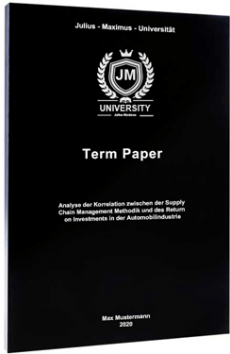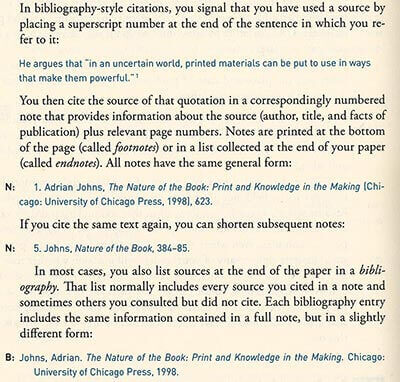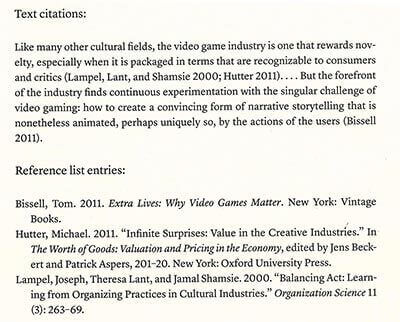
Definition of Term Paper
‘Term paper’ is a phrase which may not mean a lot to anyone in the everyday world. It is, however, significant to those in the academic world. By strict definition, it’s a written assignment on a given topic, which is assigned to a student during a particular term.
The purpose of the term paper is to give the teachers and guides of the student an idea of the level of progress which the student has made during the term. This gives the professor a tangible indication of the student’s commitment and progress. The term paper has a strong influence on the grade which is ultimately awarded to the student for his or her work during that term. It is worth the student’s time and effort to work sincerely and, research painstakingly. This will help him or her to write the best possible paper which he or she can. The topic is generally assigned at some time between the beginning and the middle of a semester to give the students sufficient time to work on their paper. The paper may be anything between 15 and 30 pages long, depending on whether the programme is an undergraduate or postgraduate programme. It should be submitted prior to the final examination.of the term.
numerous advantages for Canadian students:
- ✓ 3D live preview of your configuration
- ✓ Free express delivery for every order
- ✓ High-quality bindings with individual embossing

FAQs
Just like writing an essay, a term paper also requires an introduction, with body paragraphs and a conclusion. The requirements for the title page and table of contents will differ, depending on the style of formatting you’re required to use. Every term paper should follow this basic structure.
Begin researching for your term paper as soon as you receive the assignment. Read through the assignment multiple times, to ensure that you cover all of the requirements. Then, begin researching and find a research topic that you’re interested in. Formulate your research question and thesis statement before outlining your term paper. Once this is all done, you’re ready to start writing!
There are many term paper examples available online. It’s a good idea to read through a term paper example before you begin writing so you can get an idea of the structure and the type of wording used. Be sure that you’re only using term paper examples for inspiration and that you’re not copying from them.
A good term paper introduction will introduce the research question and thesis statement whilst explaining the new insights they can offer to the academic community. The introduction needs to outline the research methods and any limitations that the research may have. Upon reading the introduction, the reader should immediately know what the paper is about and what the structure is going to look like.
The citation method you use in your term paper depends on your institution and their requirements. There are many different referencing and citation styles, and the two most common are APA and MLA. Which style you are required to use will also dictate the requirements for the title pages and table of contents.
How to Write an Abstract
The abstract is a short summary of your term paper. You have to put it in the beginning of your work, because it is not part of your actual text. With an abstract you are able to give the reader an overview about the most important information relating to the research background, structure, method, data analysis, and results of your term paper.
The abstract follows the same structure as your paper:
| Abstract structure | Content |
| Introduction | Research question, research context, gap in literature, hypotheses |
| Method | Approaching (and attempting to close) the gap in literature: methods, study design, and data analysis (e.g. coding, statistical analysis) |
| Results | Main results (positive and negative) |
| Discussion | Interpretation of results: limitations and weaknesses, practical implications, suggestions for future research, discussion of theoretical aspects, etc. |
The length of an abstract should not exceed one page. It should not contain more than 100 Words. If you would like to get more information about how to write an abstract, this article might help you. This way:
Chicago Style Citation

One part of the process of writing an academic paper or especially a term paper, is choosing a citation style. The chicago style is a citation style which is very flexible as it unites the two main referencing styles in one manual of style. So instead of deciding between using footnotes or an author-year system the chicago style citation allows you for both.
Here are two examples of the use of an author-year system and of using footnotes:
The second system in the chicago style is the bibliography system with footnotes. There aren´t short references in the text. In this citation system all source citations are listed at the bottom of the page.

The chicago style is giving you a choice between the two above mentioned citation systems. So it is up to you to figure out which system is more suitable to your academic work.
You would like to know more about the chicago style citation? The following article is giving you more information about it. This way:
How to Write a Conclusion
The conclusion is the last paragraph of every academic work. So you have to learn how to write a conclusion. The main task of your conclusion is to give an answer to your introduction which you have written in the beginning of your work. Furthermore it expresses how the paper makes an input into the specific field of research.
Here are a few aspects which are part of a conclusion:
1. a) Main ideas/summary
b) Results: Answering the research question
c) Weaknesses and limitations
d) Impact/Future research
2. Outlook
Another mostly asked question is the length of the conclusion. There is no standart length, the length of your conclusion depends on the length of your whole paper for example your term paper. It should roughly make up to 5% of your whole academic work.
If you would like to get more information about how to write a conclusion, this article might help you. This way:



